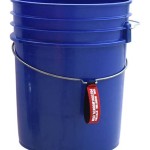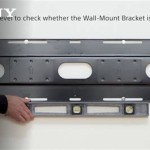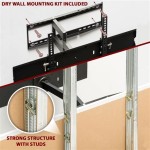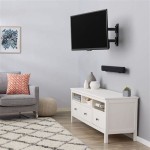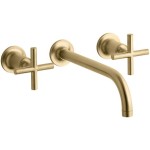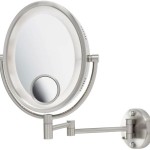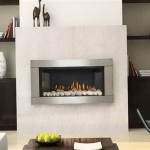Best Wall Mounted Electric Heaters: A Comprehensive Guide
Wall mounted electric heaters offer a space-saving and efficient solution for providing supplementary heat to specific areas within a home or office. Unlike central heating systems that heat an entire building, these heaters allow for targeted temperature control, potentially reducing energy costs by only heating occupied spaces. Choosing the best wall mounted electric heater involves careful consideration of several factors, including heating capacity, energy efficiency, safety features, and design.
The market offers a diverse range of wall mounted electric heaters, each with unique characteristics and capabilities. Understanding these differences is crucial for making an informed decision that aligns with individual needs and preferences. This article provides a comprehensive overview of the key aspects to consider when selecting a wall mounted electric heater, highlighting the features and technologies that contribute to optimal performance and user satisfaction.
Key Considerations When Choosing a Wall Mounted Electric Heater
Selecting the appropriate wall mounted electric heater requires a thorough assessment of several key factors. These encompass not only the heating requirements of the space but also the operational characteristics and safety features of the heater itself. Neglecting any of these aspects can lead to dissatisfaction with the purchase and potentially compromise safety.
Heating Capacity and Room Size
The heating capacity of an electric heater is typically measured in watts. A higher wattage indicates a greater ability to generate heat. Determining the appropriate wattage for a given room size is essential for achieving comfortable and efficient heating. A general guideline suggests approximately 10 watts per square foot of space, but this can vary depending on factors such as insulation quality, ceiling height, and the presence of windows and doors.
For instance, a well-insulated room with minimal drafts might require less wattage per square foot compared to a room with poor insulation and numerous air leaks. It is advisable to slightly overestimate the required wattage to ensure adequate heating capacity, especially in colder climates. Online calculators and manufacturer guidelines can assist in determining the optimal wattage based on specific room dimensions and conditions.
Furthermore, consider the purpose of the room. A bedroom might require a different heating level than a home office or a living room. Adjusting the wattage accordingly can contribute to a more comfortable and energy-efficient heating experience. Choosing a heater with adjustable heat settings allows for greater flexibility and control over the heating output.
Energy Efficiency and Operating Costs
While all electric heaters convert electricity into heat, their energy efficiency can vary significantly. Some models incorporate features that minimize energy consumption and reduce operating costs. Look for heaters with thermostats that accurately maintain the desired temperature without excessive cycling. Programmable thermostats allow for scheduling heating cycles to coincide with occupancy patterns, further reducing energy waste.
The construction of the heating element also plays a role in energy efficiency. Ceramic heating elements, for example, are known for their efficient heat transfer and ability to retain heat for a longer period, reducing the need for frequent heating cycles. Other energy-saving features include fan-forced circulation, which distributes heat more evenly throughout the room, and automatic shut-off functions that prevent overheating and conserve energy.
Before purchasing a wall mounted electric heater, it is prudent to estimate the potential operating costs. This can be done by calculating the heater's energy consumption and multiplying it by the local electricity rate. Comparing the estimated operating costs of different models can help identify the most energy-efficient option for a given heating requirement.
Safety Features and Certifications
Safety is paramount when selecting any type of electrical appliance, especially a heater. Wall mounted electric heaters should incorporate multiple safety features to prevent accidents and ensure user protection. Overheat protection is a critical feature that automatically shuts off the heater if it reaches an unsafe temperature, preventing potential fires. Tip-over protection is also essential for models that are not securely mounted to the wall, as it prevents the heater from operating if it is accidentally knocked over.
Look for heaters that have been tested and certified by reputable safety organizations such as UL (Underwriters Laboratories) or ETL (Intertek). These certifications indicate that the heater has met rigorous safety standards and is safe for use. Additionally, consider heaters with cool-touch housings, which prevent accidental burns from contact with the heater's surface. Child-proof controls and tamper-resistant features can also enhance safety, especially in households with young children.
Proper installation is crucial for ensuring the safe operation of a wall mounted electric heater. Follow the manufacturer's instructions carefully and ensure that the heater is securely mounted to a stable surface. Avoid placing the heater near flammable materials or in areas where it could be exposed to moisture. Regularly inspect the heater for any signs of damage or wear and tear, and discontinue use if any issues are detected.
Types of Wall Mounted Electric Heaters
The term "wall mounted electric heater" encompasses different technologies, each having different heating styles and energy efficiencies. Deciding on the right type requires consideration of personal preferences, budget, and heating demands.
Convection Heaters
Convection heaters warm the air that passes over a heating element. The heated air rises, circulating throughout the room and gradually raising the overall temperature. These heaters are relatively quiet in operation and provide a consistent, even heat distribution. They are well-suited for heating larger rooms or areas that require a sustained warming effect.
Convection heaters can be less energy-efficient than other types of electric heaters, particularly if they lack a precise thermostat or programmable timer. They also tend to take longer to heat a room compared to fan-forced heaters. However, their quiet operation and even heat distribution make them a popular choice for bedrooms, living rooms, and offices.
Some convection heaters incorporate advanced features such as digital thermostats, remote controls, and Wi-Fi connectivity, allowing for convenient control and monitoring of the heating process. These features can enhance energy efficiency and improve user comfort.
Radiant Heaters
Radiant heaters, also known as infrared heaters, emit infrared radiation that directly heats objects and people within their range. Unlike convection heaters, which warm the air, radiant heaters provide immediate warmth and are particularly effective in drafty areas or spaces with high ceilings. They are also considered to be more energy-efficient than some convection heaters, as they focus the heat directly where it is needed.
Radiant heaters are often used in bathrooms, garages, and workshops, where quick and targeted heating is required. However, they may not be suitable for heating larger rooms, as their heating effect is limited to the area directly in front of the heater. The heat can also be intense if you are too close to the heater.
When selecting a radiant heater, consider the type of heating element. Quartz heating elements are common and offer a good balance of efficiency and durability. Ceramic heating elements are more energy-efficient and provide a gentler heat, while carbon fiber heating elements are known for their long lifespan and rapid heating capabilities.
Fan-Forced Heaters
Fan-forced heaters use a fan to circulate air over a heating element, quickly distributing warm air throughout the room. These heaters are known for their rapid heating capabilities and are particularly effective in smaller rooms or areas that require a quick burst of heat. They are also relatively inexpensive compared to other types of electric heaters.
However, fan-forced heaters can be noisy in operation, depending on the fan speed and design. They also tend to dry out the air, which can be uncomfortable for some individuals. Furthermore, they may not provide as even heat distribution as convection heaters, as the warm air is concentrated in the direction of the fan.
When choosing a fan-forced heater, look for models with adjustable fan speeds and a built-in thermostat. These features allow for greater control over the heating output and can help to improve energy efficiency. Also, consider models with a safety shut-off feature that automatically turns off the heater if it overheats or tips over.
Installation and Maintenance
Proper installation and regular maintenance are crucial for ensuring the safe and efficient operation of a wall mounted electric heater. Following the manufacturer's instructions carefully and performing routine maintenance tasks can extend the lifespan of the heater and prevent potential problems.
Installation Procedures
Before installing a wall mounted electric heater, carefully read the manufacturer's instructions and gather all necessary tools and materials. Ensure that the mounting surface is stable and capable of supporting the weight of the heater. Use appropriate anchors and screws to securely attach the heater to the wall. Avoid placing the heater near flammable materials or in areas where it could be exposed to moisture.
If you are unsure about any aspect of the installation process, consult a qualified electrician. Improper installation can create a fire hazard or damage the heater. Also, ensure that the electrical circuit is properly grounded and capable of handling the heater's power requirements.
After installation, test the heater to ensure that it is functioning correctly. Check for any unusual noises or odors, and verify that the thermostat and other controls are working properly. If you encounter any problems, consult the manufacturer's troubleshooting guide or contact a qualified technician.
Maintenance Tips
Regular maintenance is essential for keeping a wall mounted electric heater in good working condition. Periodically clean the heater's exterior with a soft, damp cloth to remove dust and debris. Avoid using abrasive cleaners or solvents, as they can damage the finish. Inspect the heating element and fan (if applicable) for any signs of damage or wear and tear. Replace any damaged components as needed.
Clean the air vents regularly to ensure proper airflow. Clogged vents can reduce the heater's efficiency and increase the risk of overheating. Use a vacuum cleaner with a brush attachment to remove dust and lint from the vents. If the heater has a removable filter, clean or replace it according to the manufacturer's instructions.
During periods of non-use, store the heater in a dry, protected location. Cover the heater with a dust cover to prevent dust and debris from accumulating. Before using the heater after a period of storage, inspect it carefully for any signs of damage or wear and tear.

Top 20 Wall Mounted Electric Heaters

Asija Wall Mounted Electric Heater Cold And Warm Dualss Use Cool Airss English Remote Control Wal Com

Electric Ceiling Mounted Patio Heater Nordic Hygge Finish Silver

Best Electric Wall Heaters 2024 Top 5 Reviews

Top 20 Wall Mounted Electric Heaters

Best Comfort 400 Watt 120 Volt Wall Mounted Electric Panel Heater

Best Electric Wall Heaters Top 5 Mounted Youtube

Best Wall Mounted Heaters Flame Authority

The Best Bathroom Heaters Tested By Bob Vila

Edendirect Up To 1500 Watt Convection Wall Mount Indoor Electric Space Heater With Thermostat And Remote Included Ncbk0408004 At Com

